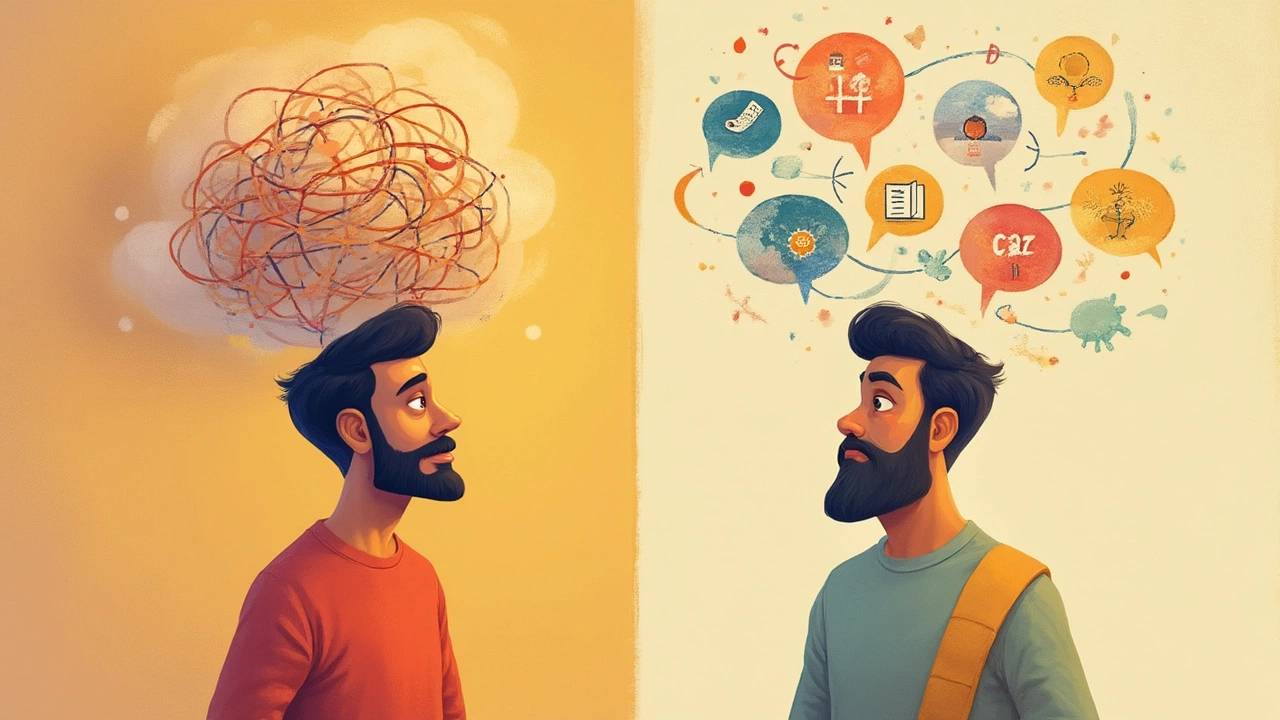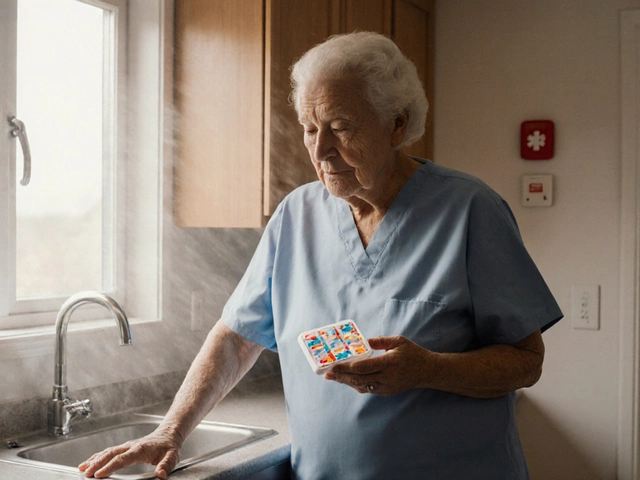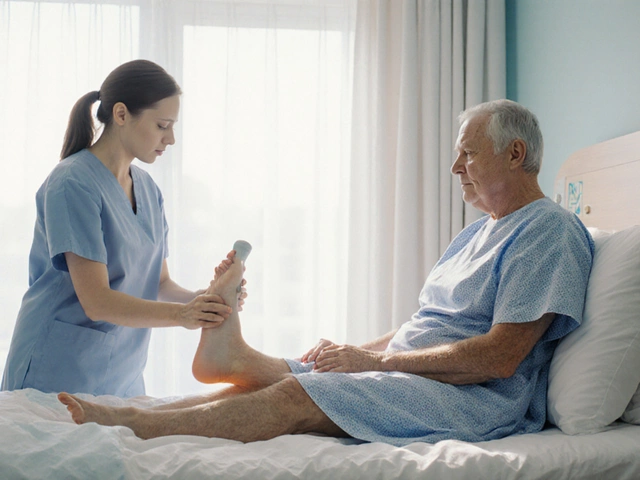If you’ve ever lain awake at 2 a.m. and wondered, ‘Is therapy actually going to help, or will I just be rehashing my problems?’ you’re not alone. Therapy gets a ton of buzz—on social feeds, in TV shows where someone pours their heart out on a leather sofa, and through glowing testimonials. But there’s also that nagging voice—yours or someone close—asking if it’s all talk, no results. Let’s dig in, bust some myths, and see what the evidence and real-life stories actually say.
How Therapy for Mental Health Actually Works
Mental health therapy isn’t one-size-fits-all, and here’s where things get interesting. When people think of therapy, talk therapy (like psychotherapy or counseling) often comes to mind. But therapy has many flavors—Cognitive Behavioral Therapy (CBT), Dialectical Behavior Therapy (DBT), Eye Movement Desensitization and Reprocessing (EMDR), and even newer options like online text chat-based counseling. Each method serves a different type of person and problem.
Let’s clear a common misconception: Therapy is not just “venting.” There’s structure—therapists use proven frameworks to help you see unhealthy patterns, challenge negative thinking, or develop coping strategies. A 2023 report in JAMA Psychiatry said CBT, for example, can reduce symptoms of depression by as much as 50% compared to no treatment. That’s not smoke and mirrors—that’s hard data.
The human connection in therapy matters more than textbooks suggest. A strong, trusting relationship between you and your therapist (what pros call “therapeutic alliance”) is the biggest single predictor of success. Studies out of Stanford and Oxford back this up: if you feel understood, validated, and encouraged, change happens faster. People who ‘click’ with their therapist actually finish treatment more often and see longer-lasting results.
Now, does it always feel comfortable? Not at all. Growth can be uncomfortable—or even painful—because you start examining deep-seated habits and emotions. But folks often report that after a few sessions, things shift. You start to spot your triggers, handle stress in healthier ways, and get more control over your moods. There’s nothing magical about it; think of it as guided mental fitness, like working out brain muscles you didn’t realize you had.
Here’s what a typical therapy path might look like:
- Initial assessment—where your therapist gets to know your history, challenges, and goals.
- Building trust and setting ground rules for confidentiality and communication.
- Diving into specific concerns—anxiety, trauma, relationships, etc.
- Practical exercises—like journaling, role-playing, or thought-tracking.
- Reviewing progress, adjusting what doesn’t work, and ramping down sessions as needed.
And, yes, progress happens in fits and starts. It’s messy, it’s personal, and it isn’t always linear. But science shows steady improvement when the right fit and method are found.
Does Therapy Work? What the Data & Real Stories Say
All right, numbers don’t lie, so let’s look at some stats. The World Health Organization reported in 2024 that around 75% of people who stick with evidence-based talk therapy show significant improvement within four months. It’s not a miracle cure, but for anxiety, depression, trauma, and everyday stress, it beats doing nothing hands down.
| Type of Condition | Therapy Success Rate (%) | Average Sessions Needed |
|---|---|---|
| Depression (CBT) | 55-65 | 12-20 |
| Generalized Anxiety | 60-70 | 12-25 |
| PTSD (EMDR) | 70-80 | 8-12 |
| Mental Health (All Forms) | 72* | Varies |
*Average based on WHO 2024 summary review
Personal stories often fill the gap stats don’t cover. Take Priya, a teacher in Mumbai, who felt panic attacks choke her daily routine. “When I started therapy, I thought I’d feel judged,” she said, “but six weeks in, I was actually handling work stress without breaking down.” Or Arjun, who struggled after losing a parent, shared, “Halfway through therapy, things started making sense—my sleep and appetite improved, and I started to feel a bit like my old self.”
But here’s a myth-buster: therapy’s effectiveness doesn’t mean you’ll never struggle again. It teaches you how to cope and bounce back. Think of it as emotional training wheels. Another overlooked fact: many folks experience what pros call a ‘therapy plateau’ where growth slows. This is normal—it often means you’re between breakthroughs, not stuck forever.
Therapist and author Lori Gottlieb writes: “Therapy can help us make sense of our stories, but more importantly, it teaches us how to rewrite them.”
So, what about people who say, “Therapy didn’t work for me?” Sometimes, it’s a poor match—a mismatch in therapist approach, culture, or communication. Sometimes, it’s about timing. Life circumstances (job changes, bereavement, financial issues) can block progress. Another reason? Unrealistic expectations. Therapy isn’t a wonder pill; it takes patience and practice, just like learning anything new.

Different Types of Therapy and What You Can Expect
Not all therapies work equally well for everyone or every mental health condition. Here's a quick look at the main types and what unique advantages they offer.
- Cognitive Behavioral Therapy (CBT): Great for depression, anxiety, OCD. Focuses on changing negative thought patterns. You’ll probably keep a journal and get take-home assignments. Sessions often last 12-20 weeks.
- Dialetical Behavioral Therapy (DBT): Especially helpful if you deal with mood swings, self-harm, or borderline personality. Emphasizes mindfulness, distress tolerance, and emotional regulation. You might do group sessions too.
- Eye Movement Desensitization Reprocessing (EMDR): Usually for trauma/PTSD. Involves focusing on a traumatic memory while following a moving object with your eyes. Sounds odd, but many studies show major reductions in trauma symptoms after about 8-12 sessions.
- Interpersonal Therapy (IPT): Useful when your biggest struggles are relationships and communication. It helps you spot unhealthy patterns with friends, partners, or family and learn healthier ways to connect.
- Group Therapy: A cost-effective and sometimes more supportive approach, especially for grief or addiction recovery. You'll share with others going through something similar, guided by a trained therapist.
- Online/Text Therapy: Gaining ground post-pandemic, this offers flexibility and privacy. Research shows it's almost as effective for mild-to-moderate anxiety and depression as face-to-face care, provided the platform is reputable.
Wondering what you do in these sessions? It's not all talk—many therapists use worksheets, role-plays, or gentle challenges to your thinking. You'll discuss goals, practice new skills, and often talk about setbacks just as much as victories. Some people want big, fast breakthroughs; others need a slower, steady pace, especially if trauma or deep-seated habits are in play.
Want a tip? If by session 3 or 4 you’re not feeling comfortable or understood, talk about it. The right match matters more than the pedigree on a wall. Many clinics let you switch therapists after a few sessions if things aren't clicking. Open, honest conversations only help in the long run.
Don’t get discouraged by speed bumps or off weeks. Mixed feelings, or even doubt about the process, are totally normal. Progress isn’t always a straight road—sometimes, the winding paths actually lead further growth.
Tips for Getting the Most Out of Therapy
So, you’re considering therapy or already started—how do you turn this opportunity into genuine lasting change? Let’s get real about practical steps.
- Set clear, realistic goals from day one. These don’t need to be epic—just knowing you want to sleep better or argue less with your partner is a good start.
- Prepare in advance. Jot down thoughts or issues that bugged you during the week. Bringing specific examples helps your therapist see the full picture.
- Practice outside of sessions. Therapy isn’t just about the hour you spend together—it’s about how you put what you learn into daily life. Try exercises, journal, or test new coping tools.
- Be open—but take your time. You don’t have to lay it all out in session one. Trust builds step by step, so share at your own pace.
- Ask questions. If you wonder why your therapist suggests something, speak up. Good therapists explain their strategies or change tracks if something doesn’t feel right.
- Notice emotional patterns during therapy. Stuck every session? Nervous to open up? These reactions are clues to deeper work.
- Stick with it—especially when you want to quit. Many breakthroughs come just after a tough session or a patch of doubt.
Remember, all those famous faces—Dwayne Johnson, Deepika Padukone—who’ve spoken about their therapy journeys weren’t immune to tough days. But they stuck with it and found their version of relief. The stigma around seeking therapy is shrinking fast, but what matters most is your private experience. If you take it seriously and put in the work, therapy’s impact beats most other self-help plans out there.
And if your schedule or budget gets in the way? Plenty of therapists offer sliding-scale fees, community mental health centers, or brief therapy formats. Even universities often have free or discounted services. If you want to try self-guided options, reputable apps like MindDoc or Woebot (with research to back them up) provide a taste of structured mental health support. But for lasting, deep change, the live human connection—whether over a screen or in-person—makes the biggest difference.
To answer the question: does therapy for mental health work? Yes, when you find the right fit and commit to the process, odds are on your side. The key is being honest, persistent, and open to trying. Change takes guts, but you don’t have to muscle through alone.






